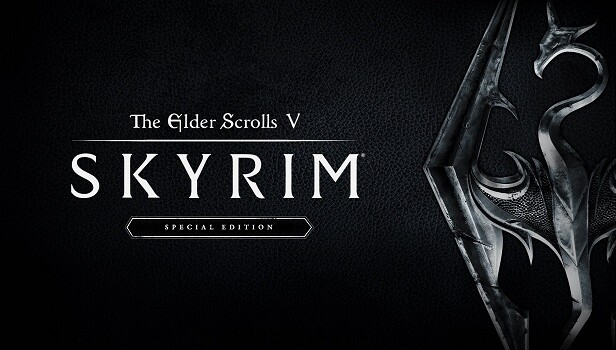The History of Skyrim: An Iconic Journey Through Tamriel
Released on November 11, 2011, by Bethesda Game Studios, The Elder Scrolls V: Skyrim is one of the most influential and beloved open-world RPGs in gaming history. Set in the vast, cold, and mountainous province of Skyrim, this fifth installment in the Elder Scrolls series revolutionized open-world design, storytelling, and player freedom. With millions of copies sold and a lasting legacy spanning over a decade, Skyrim continues to be a cultural icon in the gaming world.
The Elder Scrolls Legacy
The Elder Scrolls series dates back to the release of The Elder Scrolls: Arena in 1994. Developed by Bethesda, the series was known for its open-ended gameplay, allowing players to explore vast worlds, interact with NPCs, and follow their own path. With each new installment—Daggerfall (1996), Morrowind (2002), and Oblivion (2006)—Bethesda pushed the boundaries of open-world RPG design, setting the stage for what would become their most ambitious project yet: Skyrim.
Development and Ambitions
Development on Skyrim began shortly after the release of Oblivion, with Bethesda aiming to create a more dynamic and immersive world than ever before. The team wanted to push the limits of open-world games by focusing on three key elements: a living world, player freedom, and accessible gameplay.
To achieve this, Bethesda introduced the Creation Engine, a powerful new game engine that allowed for more detailed environments, dynamic weather, and an intricate AI system known as Radiant AI. This system enabled NPCs to react to the player’s actions in more meaningful ways, creating a world that felt alive and responsive to player choices.
The World of Skyrim
Set 200 years after the events of Oblivion, Skyrim takes place during a time of political unrest in the northernmost province of Tamriel. The High King of Skyrim has been murdered, and the region is on the brink of civil war. Amid this turmoil, the ancient dragons—long thought to be extinct—have returned, and the player takes on the role of the Dragonborn, a prophesied hero with the power to slay dragons and absorb their souls.
The game’s setting, with its cold, mountainous terrain, vast forests, and ancient ruins, was designed to reflect the rugged, Norse-inspired culture of the Nords, the native people of Skyrim. Players are free to explore this world at their own pace, whether by embarking on the main quest to stop the dragon Alduin, joining factions like the Thieves Guild or Dark Brotherhood, or simply wandering the wilderness in search of adventure.
Gameplay and Features
Skyrim offered players an unprecedented level of freedom. Whether you wanted to become a skilled warrior, a powerful mage, or a stealthy assassin, the game’s flexible leveling system allowed you to customize your character in any way you saw fit. The introduction of Dragon Shouts—powerful abilities unlocked by slaying dragons—added another layer to combat, giving players access to unique abilities like Unrelenting Force or Whirlwind Sprint.
Beyond combat, Skyrim was filled with non-linear quests, dungeons, and hidden secrets. Players could craft weapons, enchant items, cook food, and even buy and furnish homes. The game’s vast world was filled with dynamic events and random encounters, making every playthrough feel unique.
Critical and Commercial Success
Skyrim was an instant success upon release, receiving universal acclaim from critics and players alike. Its open world, freedom of choice, and sheer scope were praised, with many calling it one of the greatest RPGs of all time. Skyrim won numerous Game of the Year awards in 2011 and went on to sell over 30 million copies across multiple platforms.
The game’s enduring popularity led to multiple re-releases, including the Legendary Edition (which bundled the game with all of its DLCs) and the Special Edition in 2016, which included updated graphics and support for mods on consoles. Skyrim was later released for the Nintendo Switch and even adapted for virtual reality.
Expansions and DLCs
Bethesda supported Skyrim with three major downloadable content (DLC) expansions:
- Dawnguard (2012): Focused on a conflict between a vampire lord and an ancient vampire hunting group known as the Dawnguard. It introduced vampire and werewolf skill trees, new quests, and new locations.
- Hearthfire (2012): A smaller expansion that allowed players to build and customize their own homes, adopt children, and manage their properties across Skyrim.
- Dragonborn (2012): Took players to the island of Solstheim, where they faced a new enemy—the first Dragonborn. This expansion added new quests, abilities, and a new region to explore.
Legacy and Influence
Skyrim’s influence on the RPG genre and open-world game design is undeniable. Its expansive world and player-driven storytelling inspired a new generation of developers and set a new standard for open-world games. Titles like The Witcher 3: Wild Hunt, Breath of the Wild, and Horizon Zero Dawn were all influenced by Skyrim’s design principles.
Skyrim’s modding community has also kept the game alive well beyond its initial release. Thousands of mods have been created, ranging from graphical improvements to entirely new quests and gameplay systems. Bethesda embraced this community, allowing mods on consoles and continuing to support the game’s longevity.
The Future of the Elder Scrolls
While fans eagerly await the release of The Elder Scrolls VI, Skyrim remains a cornerstone of the Elder Scrolls series and a beloved title for millions of players. Its legacy continues to grow, and its influence will be felt in the RPG genre for years to come.
As players continue to return to the world of Skyrim—whether for the first time or on a nostalgic adventure—its impact on gaming history remains as strong as ever.


